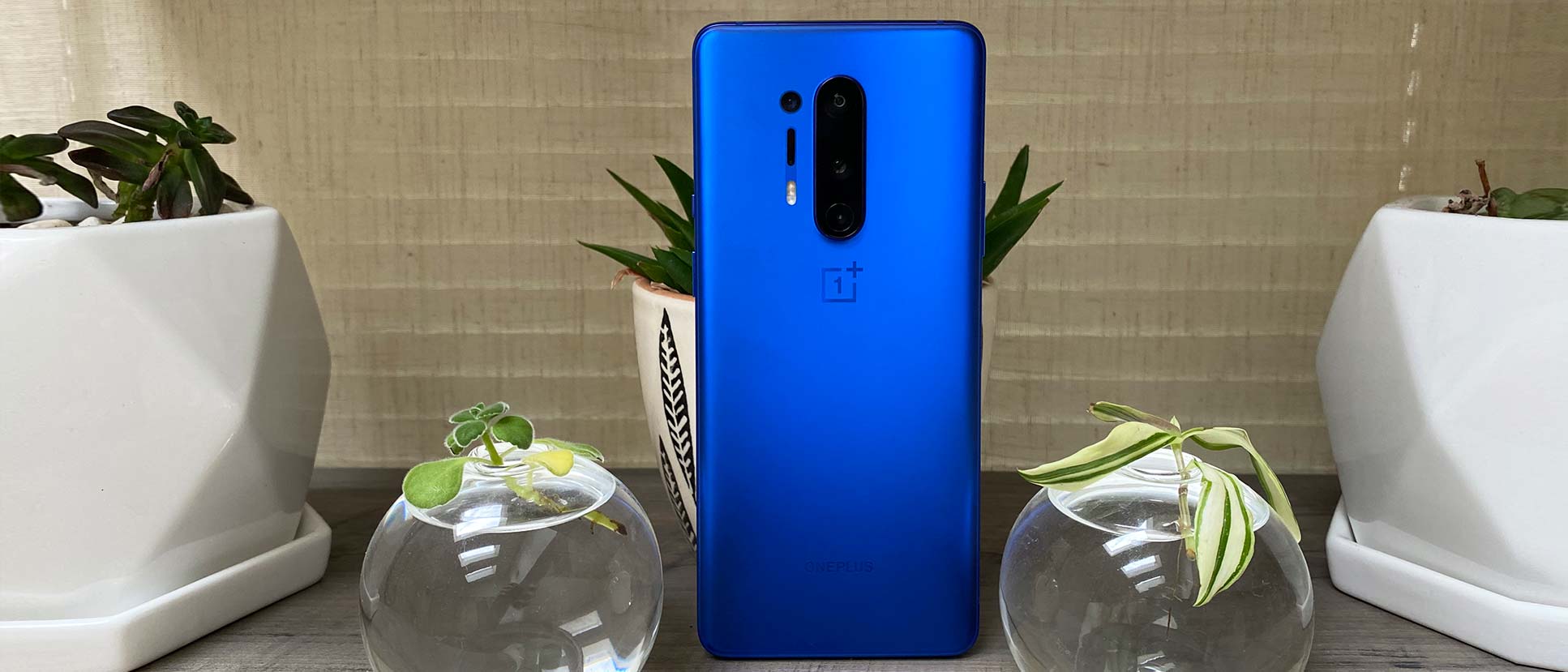Tom's Guide Verdict
The OnePlus 8 Pro delivers a big and beautiful 120Hz display, fast performance and the fastest wireless charging ever in a stunning design. But the cameras and 5G could be better.
Pros
- +
Bright and beautiful 120Hz display
- +
Long battery life
- +
Strong performance
- +
Very good quad cameras
- +
Super fast wired and wireless charging
Cons
- -
Curved display causes accidental taps
- -
No mmWave 5G support
Why you can trust Tom's Guide
The OnePlus 8 Pro is a much better deal now than when it first launched. For $799 (down from $899), you get premium craftsmanship, and eye-popping 6.78-inch display (with 120Hz refresh rate) quad cameras and 5G capability. The OnePlus 8 Pro also offers wireless charging — finally! — and it’s the fastest wireless charging we’ve ever tested.
Is the OnePlus 8 Pro flawless? Nope. The otherwise stunning curved display led to several accidental taps during my OnePlus 8 Pro review. And while the OnePlus 8 Pro’s cameras are certainly capable, they’re not best in class.
Price: $799/£799
OS: Android 10 with OxygenOS
Display: 6.78 inches OLED (3168 x 1440), 120Hz
CPU: Snapdragon 865
RAM: 8GB, 12GB
Storage: 128GB, 256GB
Rear cameras: 48MP wide (f/1.78), 8MP telephoto (3x, f/2.44), 48MP ultra-wide (f/2.2), 5MP color filter (f/2.4)
Front camera: 16MP (f/2.45)
Battery: 4,510 mAh
5G: Sub 6-GHz
Size: 6.5 x 2.9 x 0.33
Weight: 7 ounces
Some may prefer the cheaper OnePlus 8, which now costs $599 and is sold through T-Mobile and Verizon — the OnePlus 8 Pro is only sold unlocked. But the OnePlus 8 Pro is a better phone all around, with a smoother display, wireless charging and better cameras.
Overall, the newer Samsung Galaxy S21 Plus looks like a better option because it offers a dynamic 120Hz display along with more advanced cameras. And some may simply want to wait for the OnePlus 9 this spring. But the OnePlus 8 Pro is a very good Android phone and it still makes our best phones list.
- OnePlus 8 review
- OnePlus 8 vs OnePlus 8 Pro: What should you buy?
- Samsung Galaxy Note 20 Ultra vs OnePlus 8 Pro: Which phone wins?
OnePlus 8 Pro price and avilability
The OnePlus 8 Pro now starts at $799 or £799 with 12GB of RAM and 256GB of storage. At the time of this writing, OnePlus does not offer the 8GB/128GB version. But overall that's a good price for that much storage.
The OnePlus Nord is not sold through U.S. carriers, but you can still buy it directly from OnePlus through the OnePlus U.S. website and the OnePlus UK website.
OnePlus 8 Pro review: Design and colors
Samsung could learn something from the OnePlus 8 Pro’s design. It’s gorgeous without being a fingerprint magnet. The OnePlus 8 Pro uses matte-frosted glass using a new crafting process. The finish is smooth to the touch but not slippery, and there’s a visible sheen to the back of the phone that changes shades depending on how ambient light hits it.
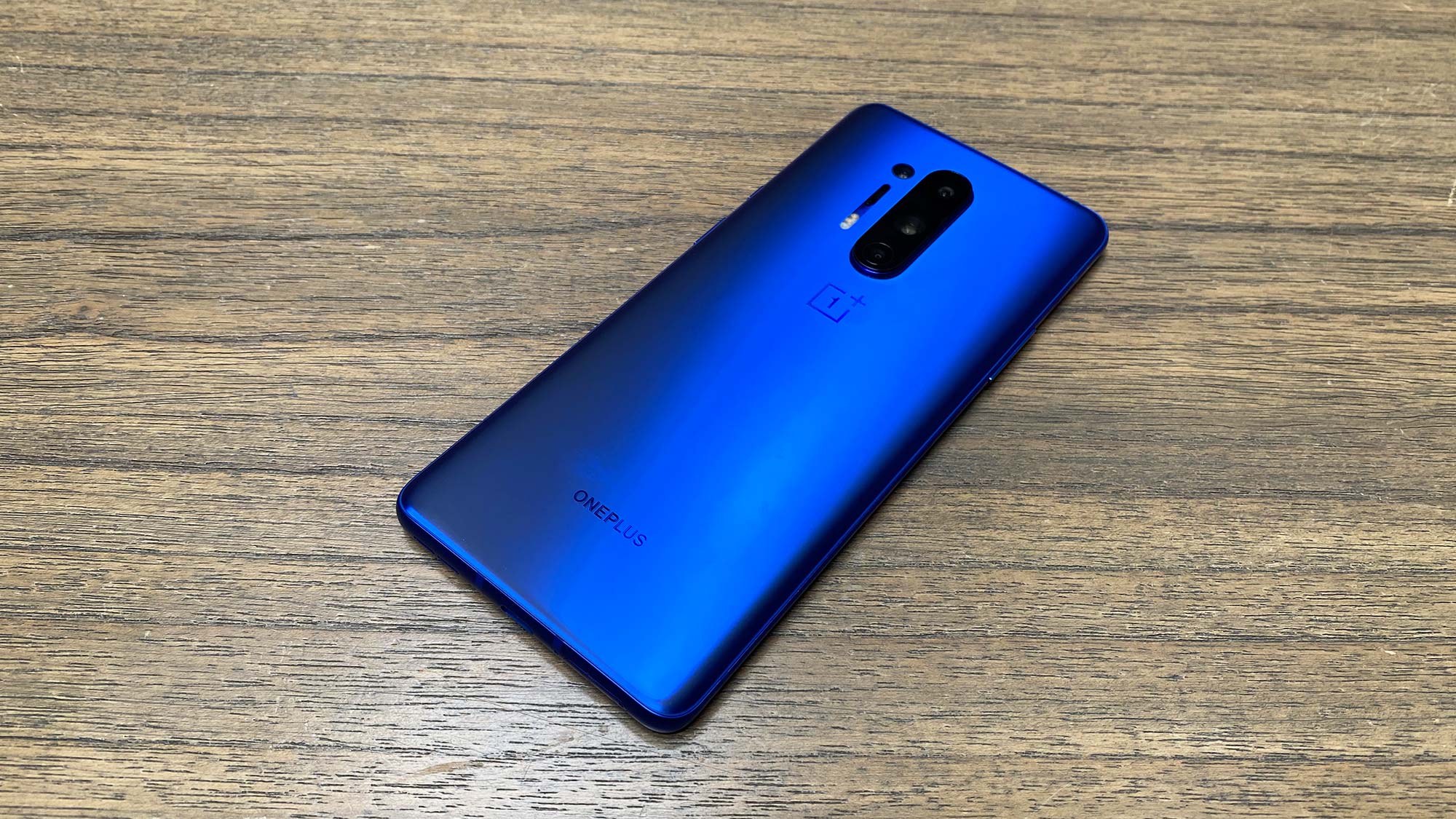
The OnePlus 8 Pro comes in three colors: Onyx Black, Glacial Green and Ultramarine Blue. I tested the Ultramarine Blue model, which really pops but might be a bit loud for some. The Glacial Green color is more subtle but more vibrant than the Midnight Green hue on the iPhone 11 Pro.
There’s more good news. The OnePlus 8 Pro is IP68 rated, which makes this the first OnePlus phone to have that level of water resistance. That means the phone can survive being submerged in 1.5 meters (5 feet) of water for 30 minutes, thus earning it a spot on our list of the best waterproof phones.
I do have some complaints about the OnePlus 8 Pro’s design. The first is that the curved screen is too curved for me. On multiple occasions I pressed something I didn’t intend to; for example, I would be in the Google Play Store and my left pinky wrapped around the phone would open an app I didn’t mean to select. And on other occasions, I thought that the OnePlus 8 Pro wasn’t registering my taps, but it turned out that my other hand was touching the screen.
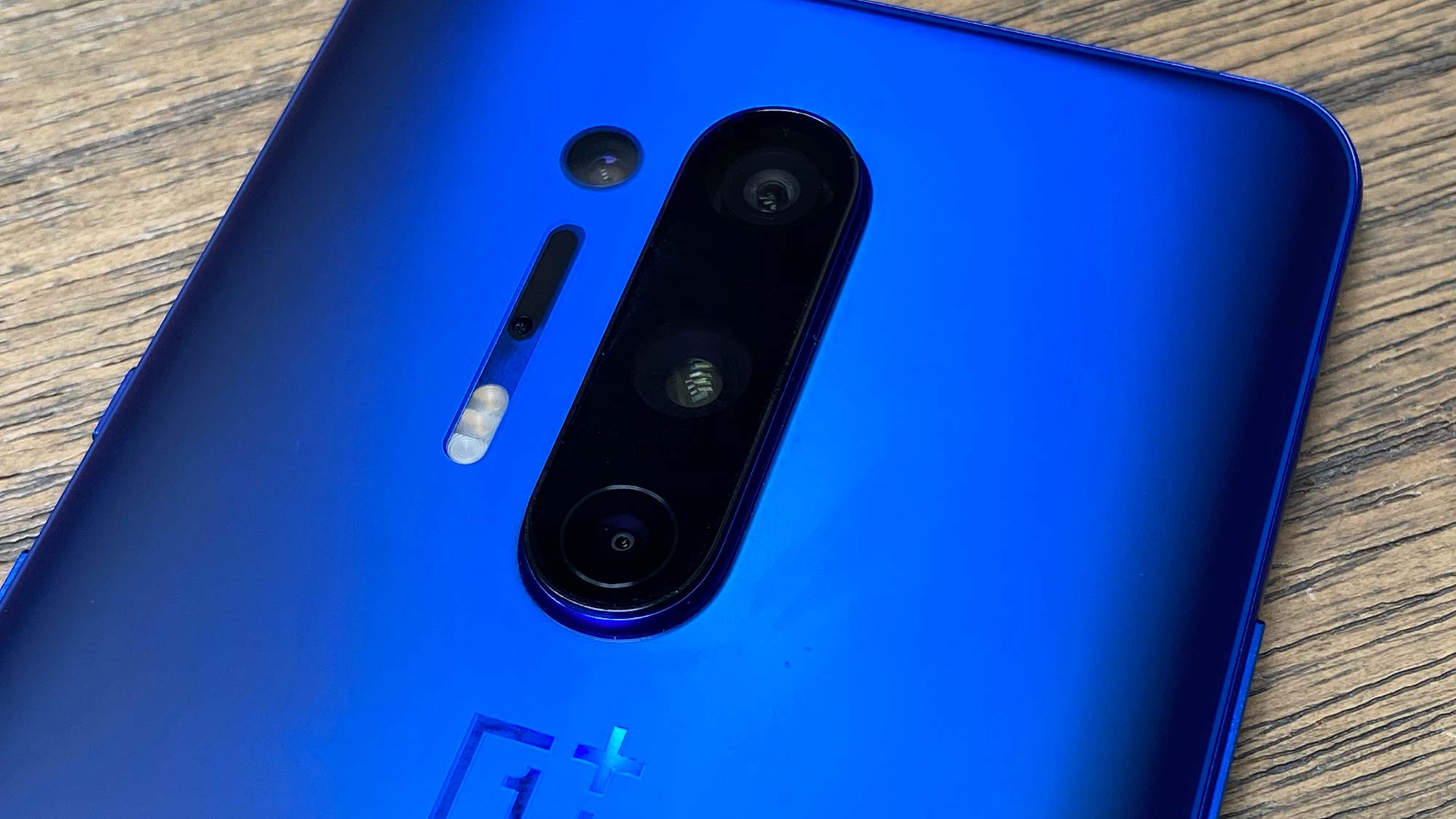
My other issue is that the rear vertical camera bump protrudes more from the back of the OnePlus 8 Pro than the camera patches do on the Samsung Galaxy S20 Plus and iPhone 11 Pro Max.
The good news is that the OnePlus 8 Pro is fairly sleek given it’s large 6.78-inch display. It measures 6.5 x 2.9 x 0.33 inches and weighs 7 ounces, compared to 6.37 x 2.9 x 0.3 inches and 6.56 ounces for the Galaxy S20 Plus. So the OnePlus 8 Pro is bigger and taller than the S20 Plus, but that’s understandable given that the Samsung has a smaller 6.7-inch screen. The OnePlus 8 Pro is also lighter than the 7.26-ounce OnePlus 7 Pro, mostly because OnePlus ditched the pop-up selfie camera.
OnePlus 8 Pro review: Display
The OnePlus 8 Pro possesses one of the best displays I’ve ever tested on a phone, which is saying something given that the iPhone 11 Pro Max costs $200 more and the Galaxy S20 Plus is $400 more. Not only do you get a super smooth 120Hz refresh rate like Samsung’s flagship, but the OnePlus 8 Pro gives you that rate even at its max 2K resolution. With the S20 line, you have to drop down to 1080p resolution if you want the higher 120Hz rate.
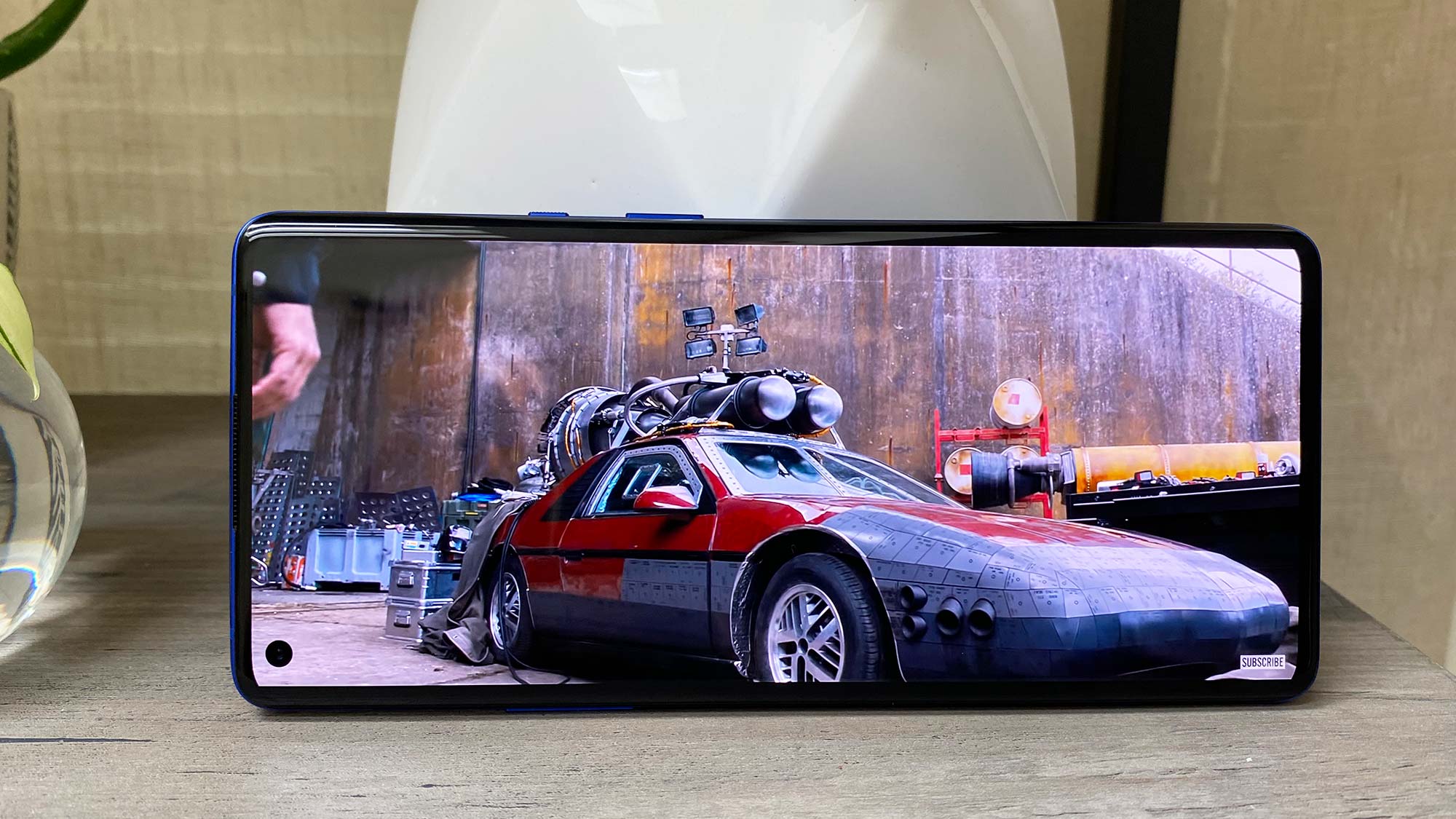
So how does the OnePlus 8 Pro screen look? Dazzling. When I fired up the Furious 9 trailer, the deep red Pontiac Fiero with a rocket strapped to its roof had plenty of punch, and I could make out fine details in its fortified nose. I watched another scene with the Galaxy S20 side by side with 120Hz mode on, and the OnePlus 8 Pro’s panel looked a little smoother during the most frenetic action sequences, such as when Letty’s (Michelle Rodriguez) motorcycle collides with another car in mid air.
The OnePlus 8 Pro’s picture looks so smooth thanks to what’s called MEMC. A dedicated chip upsales videos on Netflix and YouTube from 24 fps up to 120 fps. Amazon videos go up to 60 fps. Another plus is an HDR boosting feature that optimizes every frame, which results in deeper blacks and whiter whites. I did notice that faces were brighter even in darker areas when watching the James Bond No Time to Die trailer on the OnePlus 8 Pro compared to the Galaxy S20.
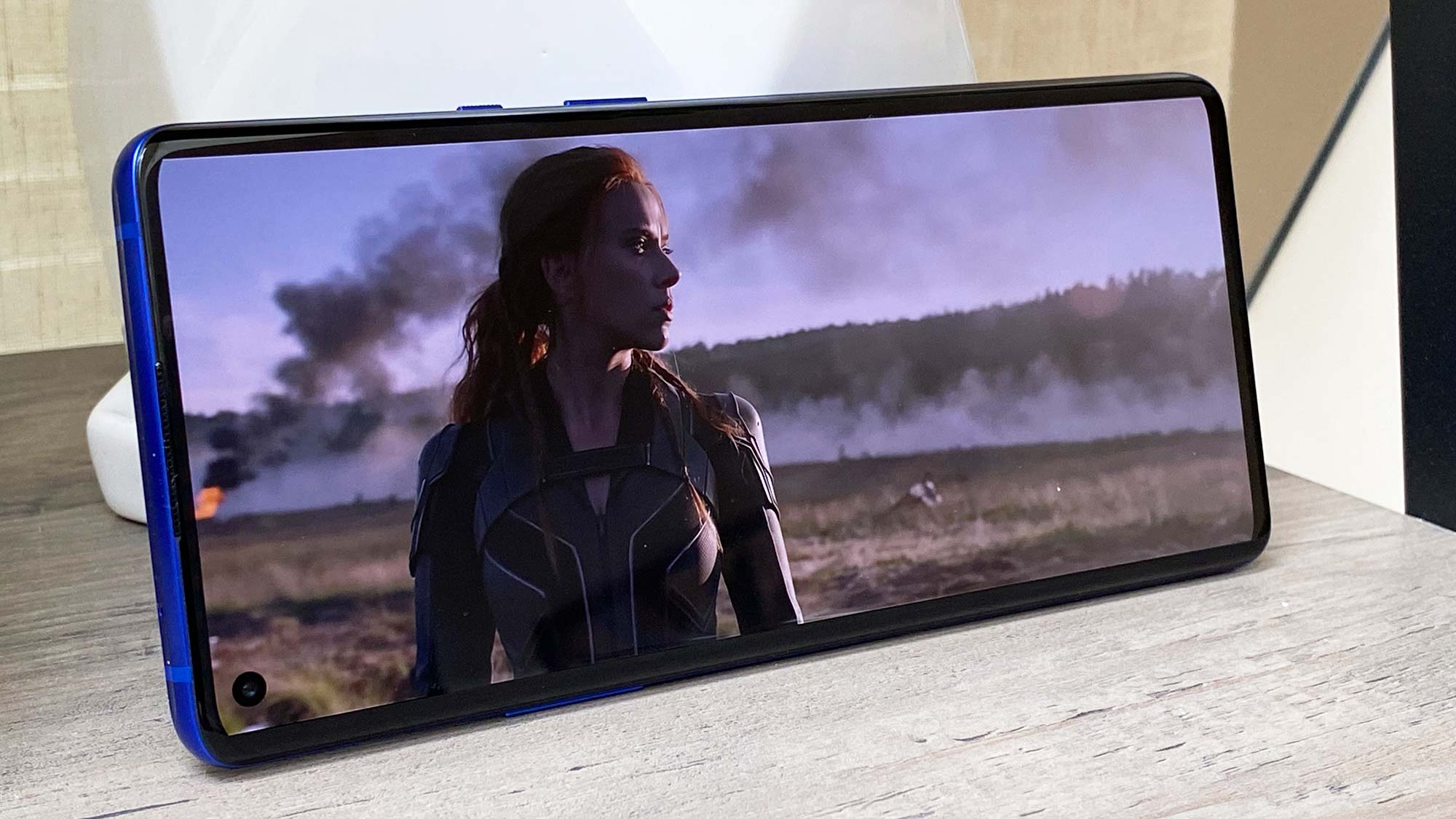
The OnePlus 8 Pro is rated for 1,300 nits of brightness, and it was just as bright outdoors as the iPhone 11 Pro and Galaxy S20 when viewing the Tom’s Guide website. The OnePlus 8 Pro’s display also fared very well in our lab tests. The panel registered 165% of the sRGB color gamut and 116.9% in the more demanding DCI-P3 gamut. By comparison, the Galaxy S20 Plus hit a higher 224% on sRGB and 163.4 on DCI-P3. I did notice more saturated hues on the S20 when watching the same scene on Tiger King on both phones, even with both displays set to vivid mode.
The OnePlus 8 Pro does show more accurate colors than the Galaxy S20 Plus. On the Delta-E test, which measures color accuracy, the OnePlus 8 Pro scored 0.26, compared to 0.36 for the Galaxy S20 Plus. A score of 0 is perfect, so lower scores are better. The OnePlus 8 Pro even edged out the iPhone 11 Pro Max’s score of 0.28.
OnePlus 8 Pro review: Cameras
The OnePlus 8 Pro is a remarkably capable camera phone and holds its own with the best camera phones in some scenarios. However, while the low-light results were particularly impressive, the OnePlus 8 Pro struggled a bit versus the competition with portraits and close-ups.
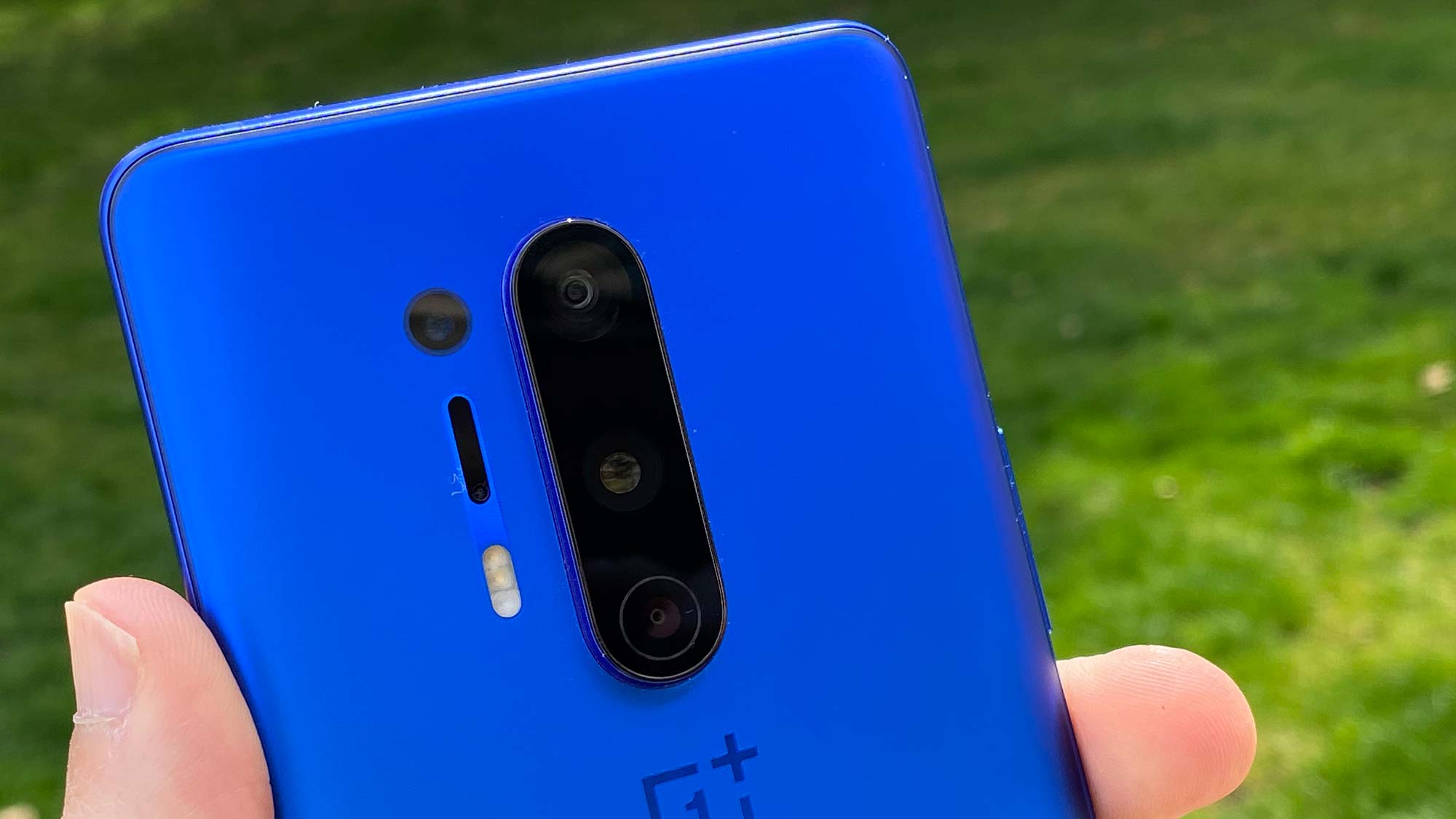
The OnePlus 8 Pro packs four rear cameras, including a 48-megapixel main camera with an f/1.78 aperture that will let you shoot at 48MP or 12MP. The 48MP mode is best for when you have a lot of ambient light. There’s also a 8MP telephoto camera with a 3x optical zoom, and ultra-wide 48MP camera with a 119-degree field of view and a dedicated 5MP color filter camera that lets you apply artistic filters as you’re shooting.
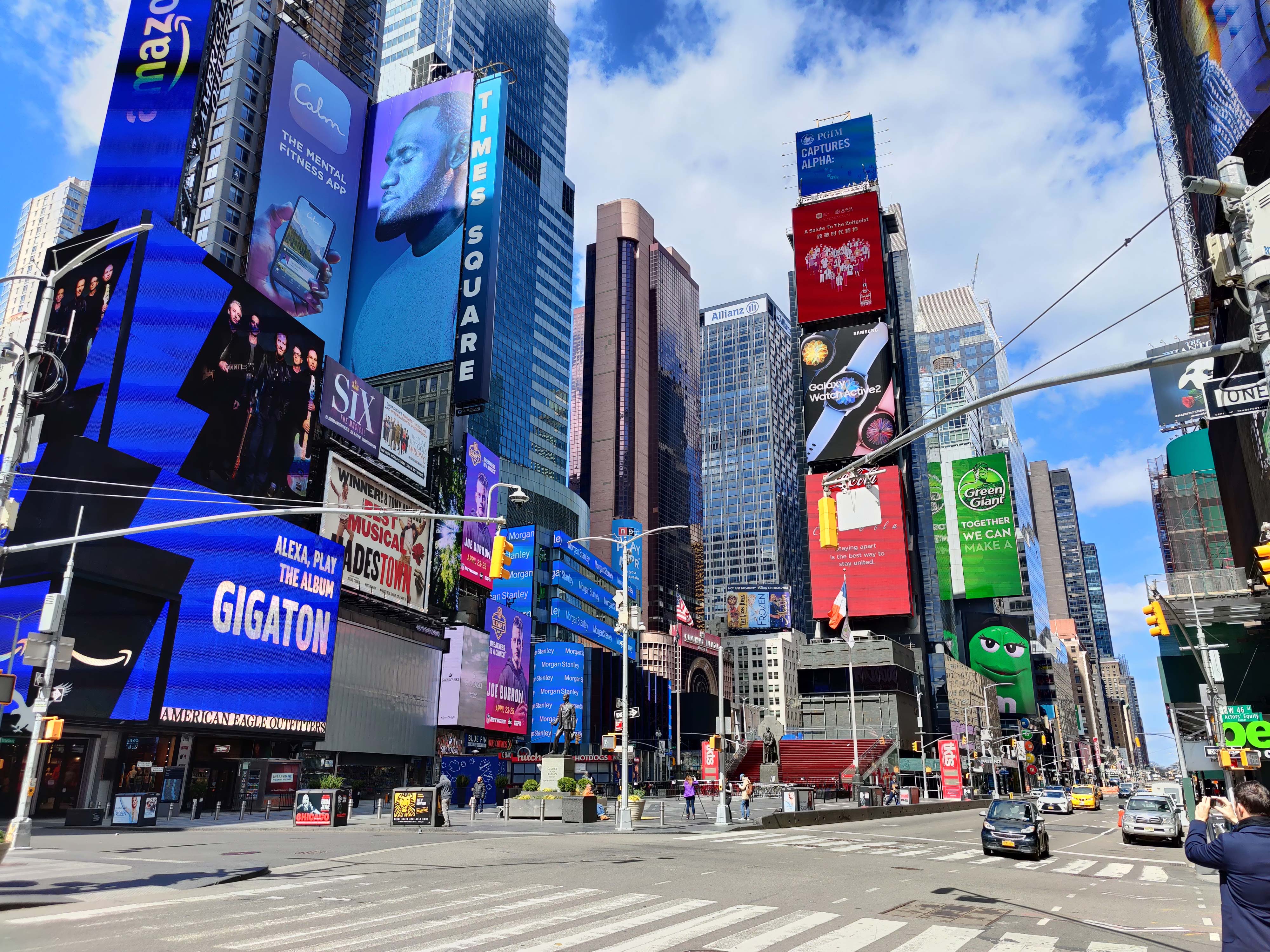
As you can see in this photo of a nearly empty Times Square, the OnePlus 8 Pro does a fine job capturing the surrounding billboards without blowing out the sunny sky. You can make out details in the clouds as well as in the surrounding signs.
To test out the 48MP camera mode, I captured a photo of some Easter decorations and spring flowers at the Twin Pond Farms country market in Howell, NJ. The 48MP photo delivered crisper details across the board, including in the bunnies’ faces and their straw arms. Plus, you have a lot more freedom with this amount of detail to crop in vs 12MP mode.
I put the OnePlus 8 Pro’s camera up against the Galaxy S20 Pro in this photo of a stream at a NJ park. The Galaxy S20 delivers more vibrant colors, especially in the grass, and it’s a warmer photo overall, but the OnePlus 8 Pro’s shot offers more true-to-life colors and more detail when you zoom in, especially on the left side of the image underneath the trees.
The OnePlus 8 Pro fell a bit flat versus the iPhone 11 Pro Max in this portrait comparison. While the bokeh effect is convincing with the blurred flowering tree in the background, there’s overall image is hazier than the iPhone 11 Pro’s shot. You can also make out a lot more detail in my green jacket in the iPhone 11 Pro portrait. Another bummer: you can’t adjust the level of blur after the fact as you can on the Galaxy S20.
To test out the 3x optical zoom on the OnePlus 8 Pro, I snapped this photo of a colorful baseball dugout with it and the Galaxy S20. Here I give Samsung’s phone a slight edge; the “Go Freehold” text is easier to read, and the orange, purple, pink and blue in the painting are more vibrant than on the OnePlus 8 Pro. Still, the details are about as sharp in both photos.
To test the OnePlus 8 Pro’s Nightscape mode, I snapped a photo of a candle in almost complete darkness. And this phone did a much better job capturing the wick and flame than the iPhone 11 Pro Max did; they got blown out in the latter pic. However, the iPhone managed to deliver a brighter overall image, as it’s easier to make out the runner on the table.
How about close-ups? The OnePlus 8 Pro struggled in this shot of flowers. The center of the frame is in focus, but the surrounding flowers get blurred in with the rest of the tree. Meanwhile, the Galaxy S20’s shot delivers a brighter white in the flowers and more detail in the petals.
As for the color filter camera, I don’t know if it really needs to exist. You can apply similar effects after you shoot on most camera phones. The choices on the OnePlus Pro 8 range from matte and vivid to black and white. But the most appealing — and strange — color filter is Photochrom. This usually refers to a process of producing colorized images from black-and-white photographic negatives.
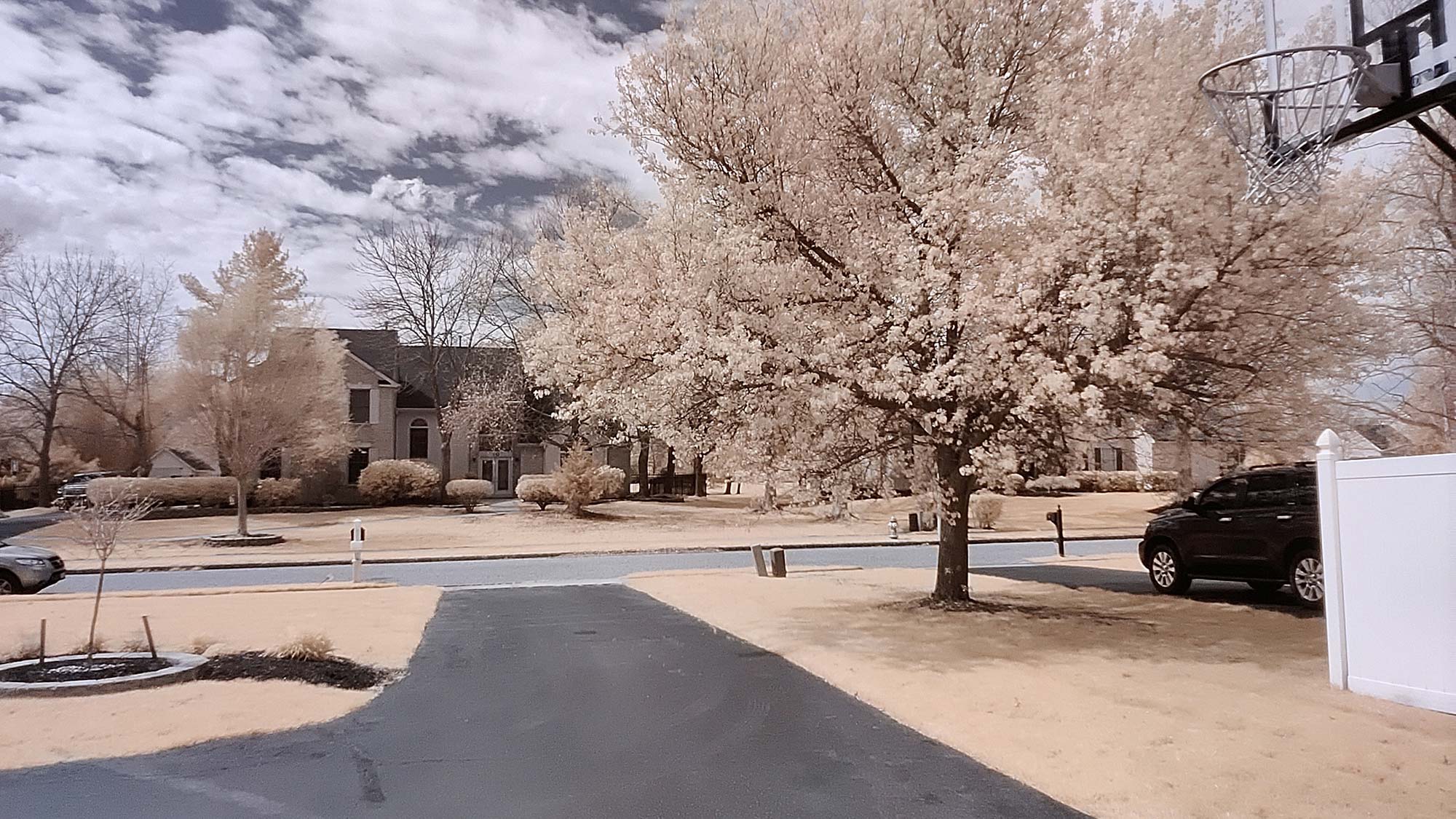
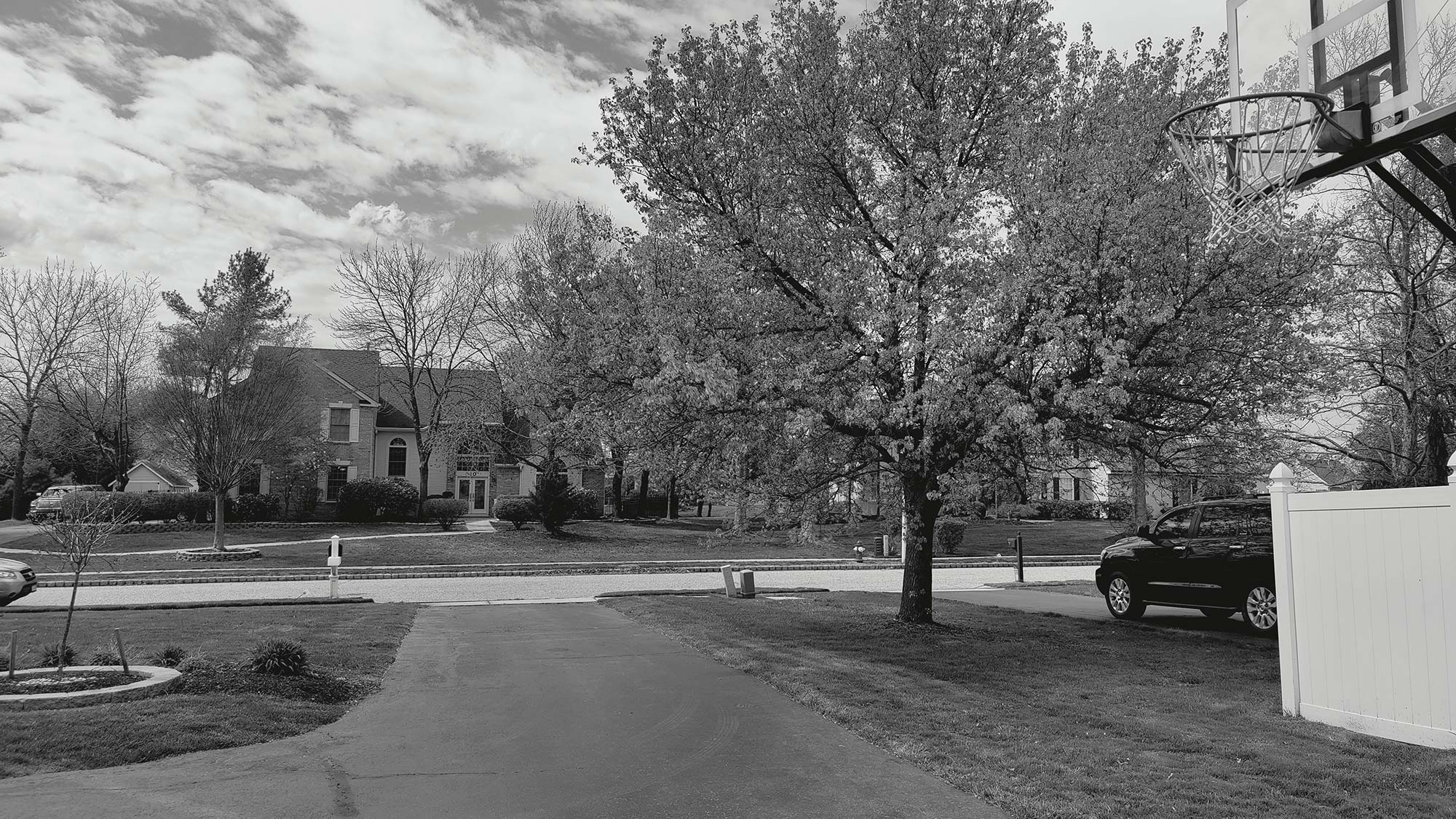
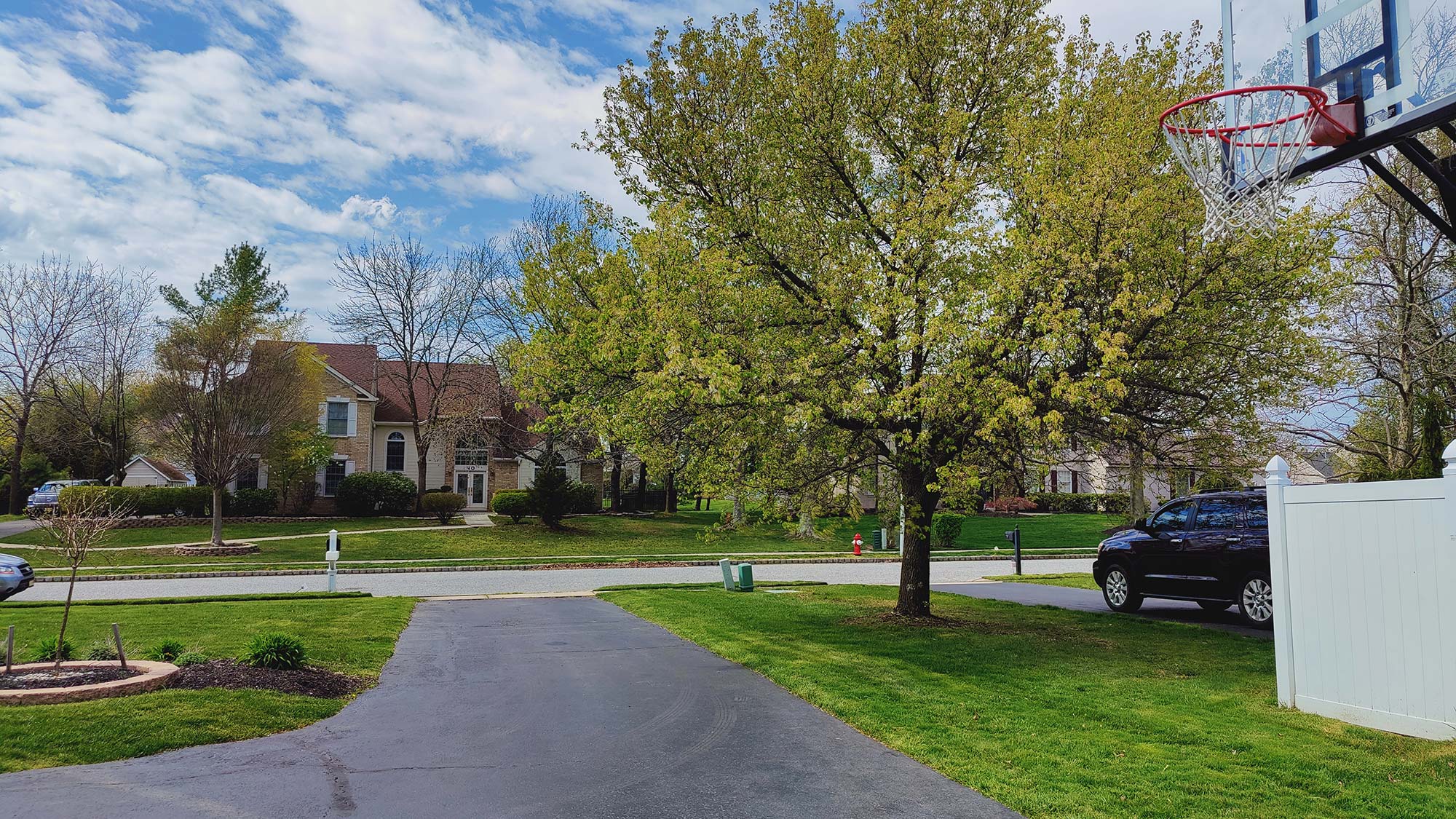
As you can see in this example, Photochrom takes a green tree and grass and turns them into an odd cream color. It makes my neighborhood look like it’s experiencing a nuclear winter. The same mode made me see what my living room couch would look like if it changed from dark gray to cream.
The 16MP front camera on the OnePlus 8 Pro snaps satisfying selfies, especially compared to the Galaxy S20. While Samsung’s phone has a tendency to overly smooth faces and wash them out, the OnePlus 8 Pro delivered a more realistic portrait. Yes, the wrinkles around my eyes and in my forehead are more visible, but I also appreciate the warmer skin tone and more detail in my hair that the OnePlus 8 Pro offered.
OnePlus 8 Pro review: Performance
As you would expect the OnePlus 8 Pro packs the latest Qualcomm Snapdragon 865 chip to deliver blazing performance, and it’s paired with LPDDR5 RAM, which is designed to boost memory speeds by 30% while lowering power consumption by 20%. In addition, OnePlus includes a RAM booster for accelerating gaming and speeding up daily performance by learning your usage of the device.
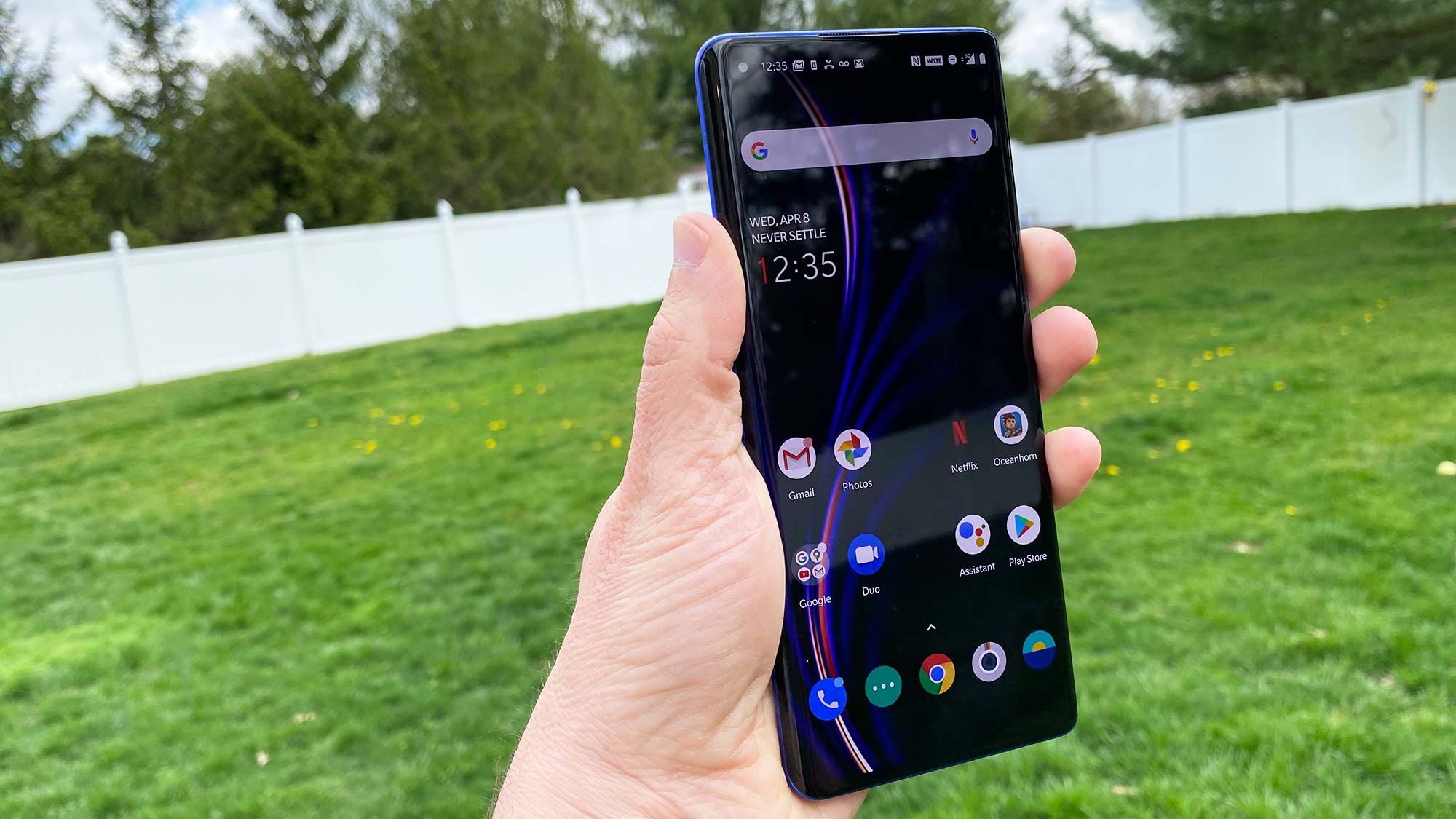
Overall, I was impressed with the OnePlus 8 Pro’s speed. I enjoyed silky smooth performance when playing Call of Duty; even with multiple enemies on screen I didn’t experience lag. And the Asphalt 9 racing game felt almost too fast as I flipped in the air off some ramps.
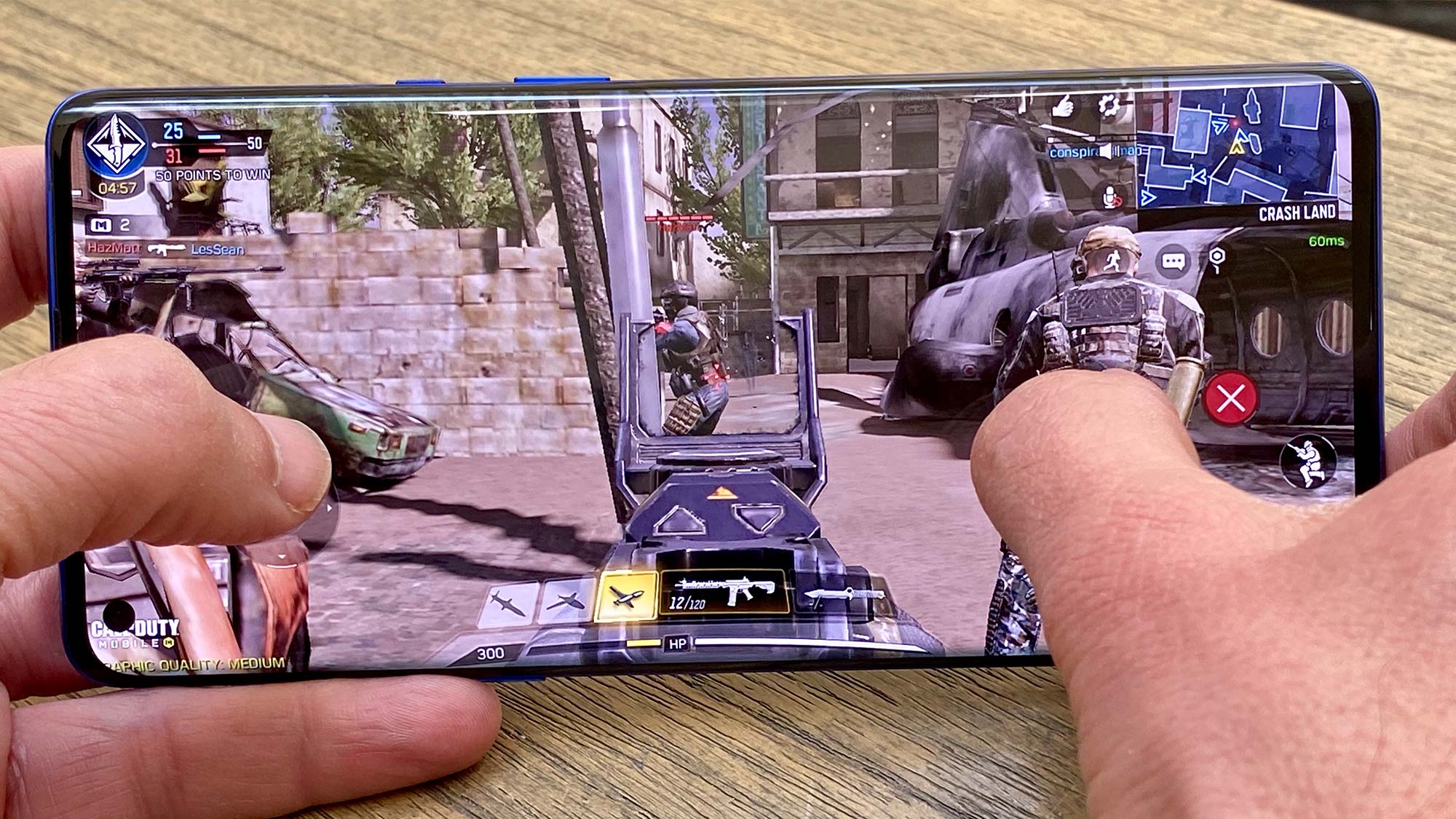
On Geekbench 5, which measures overall performance, the OnePlus 8 Pro scored 3,379 on the multi-core portion of the test and 906 on single-core. Both of those numbers beat the Samsung Galaxy S20 Plus (3,076/818). The iPhone 11 Pro Max trumped both phones with multi- and single-core results of 3,517 and 1,334.
The OnePlus 8 Pro was only slightly behind the Galaxy S20 on the GFXBench graphics benchmark. When we ran the 1440p Atzec Ruins OpenGL (high tier) offscreen test, the OnePlus 8 Pro delivered 20 fps, compared to 21 fps for the Samsung.
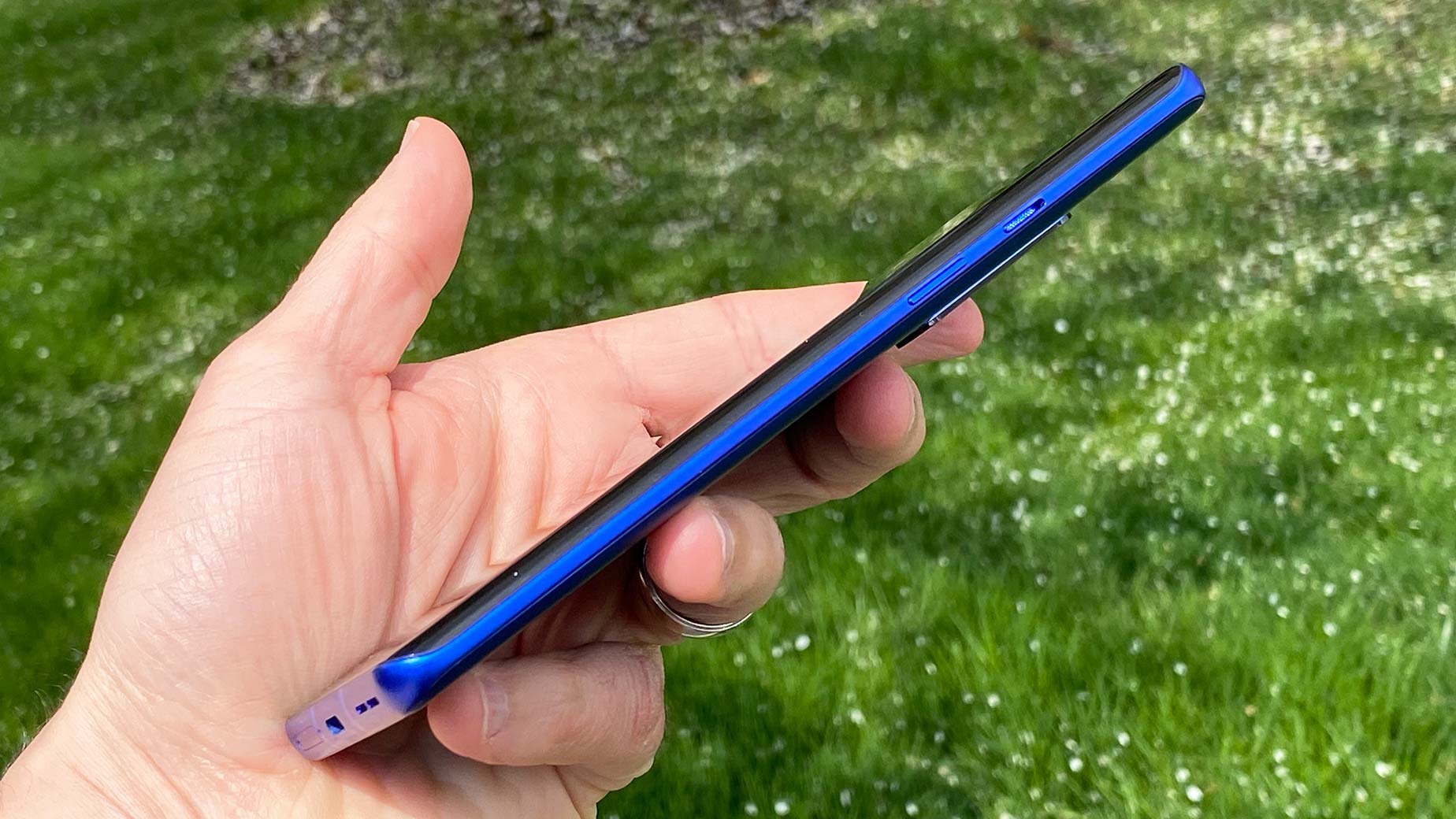
However, the OnePlus 8 Pro fell behind the Galaxy S20 Plus on our real-world video editing test. Using Adobe Rush to transcode a 4K video to 1080p, it took the OnePlus 8 Pro 1 minute and 43 seconds, compared to 1:14 for the S20 Plus. The iPhone 11 Pro Max beat them all with 45 seconds.
OnePlus 8 Pro review: 5G
The good news is that the OnePlus 8 Pro supports 5G networks. The bad news is that this phone doesn’t support mmWave networks, which means you won’t get the fastest 5G speeds. The phone's X55 5G modem supports sub-6GHz 5G, low and mid band. Only the regular OnePlus 8 sold through Verizon supports mmWave.
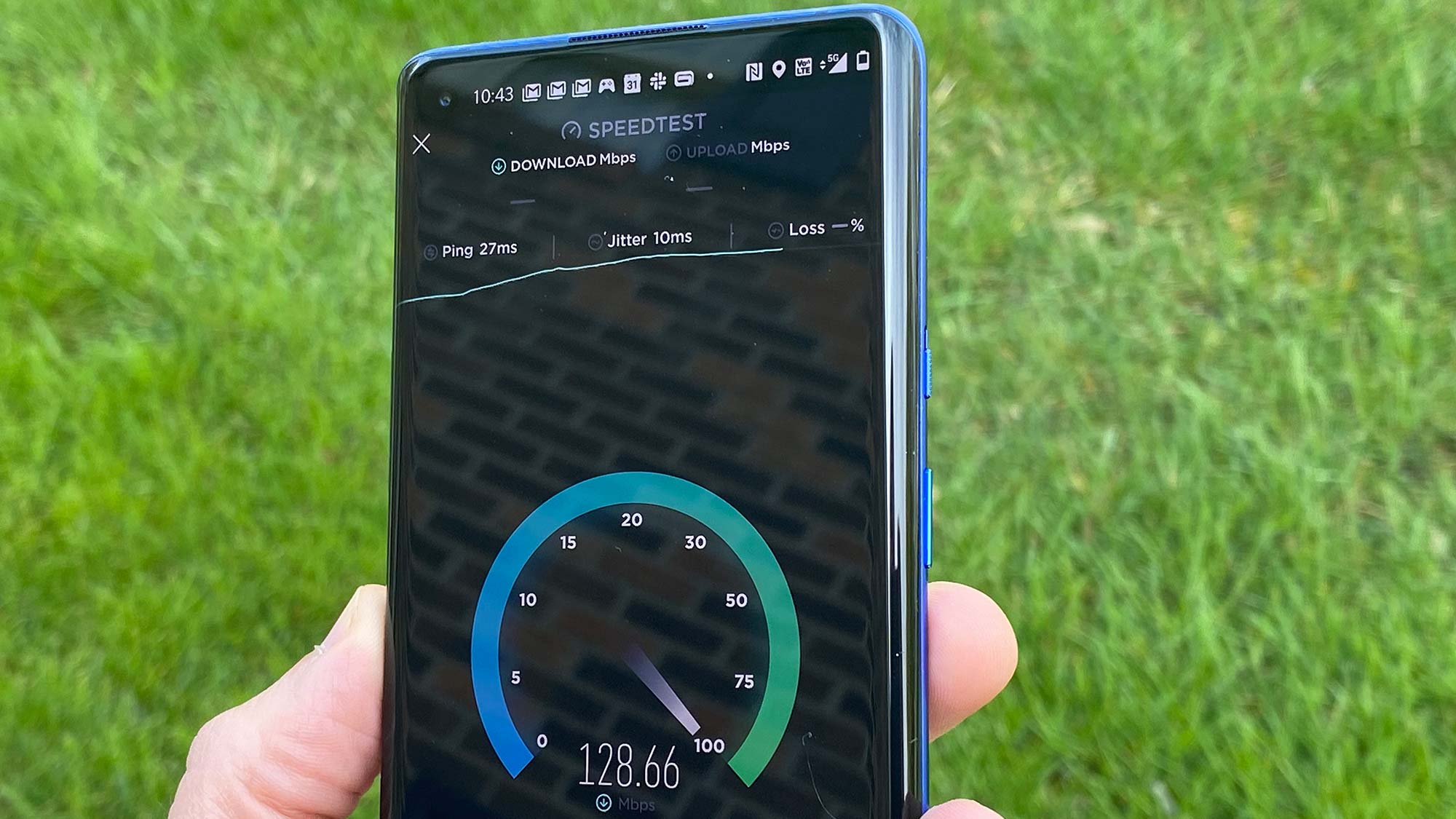
Using T-Mobile’s 5G network I ran several tests using the Speedtest app, and downloads from the OnePlus 8 Pro ranged from 85 Mbps down to 105 Mbps, which is not blazing but better than my iPhone 11 Pro Max over Verizon 4G LTE (65 Mbps down). The OnePlus 8 Pro’s upload speeds did not impress, averaging 11 Mbps.
OnePlus 8 Pro review: Battery life
The OnePlus 8 Pro packs a 4,510 mAh battery, which is slightly bigger than the 4,500 mAh battery in the Samsung Galaxy S20 Plus. And this phone delivered impressive endurance in our battery test, which involved continuous web surfing over 5G on 150 nits of screen brightness. The OnePlus 8 Pro lasted an excellent 11 hours and 5 minutes with the display set to 60 Hz. That runtime bests the Galaxy S20 Plus by about a half hour, as Samsung’s phone lasted 10:31.
Putting the phone into 120Hz mode did take a toll on battery life, as the OnePlus 8 Pro lasted only 9 hours and 2 minutes. Still, this result also bests the Galaxy S20 Plus (8:55). Note that we ran our battery test on full HD resolution and not quad HD, but we will update this review once we’ve run another series of tests.
OnePlus 8 Pro fast charging and wireless charging
The OnePlus 8 Pro isn’t just the first OnePlus phone to offer wireless charging and reverse wireless charging. It’s officially the fastest wireless charging phone in the world.
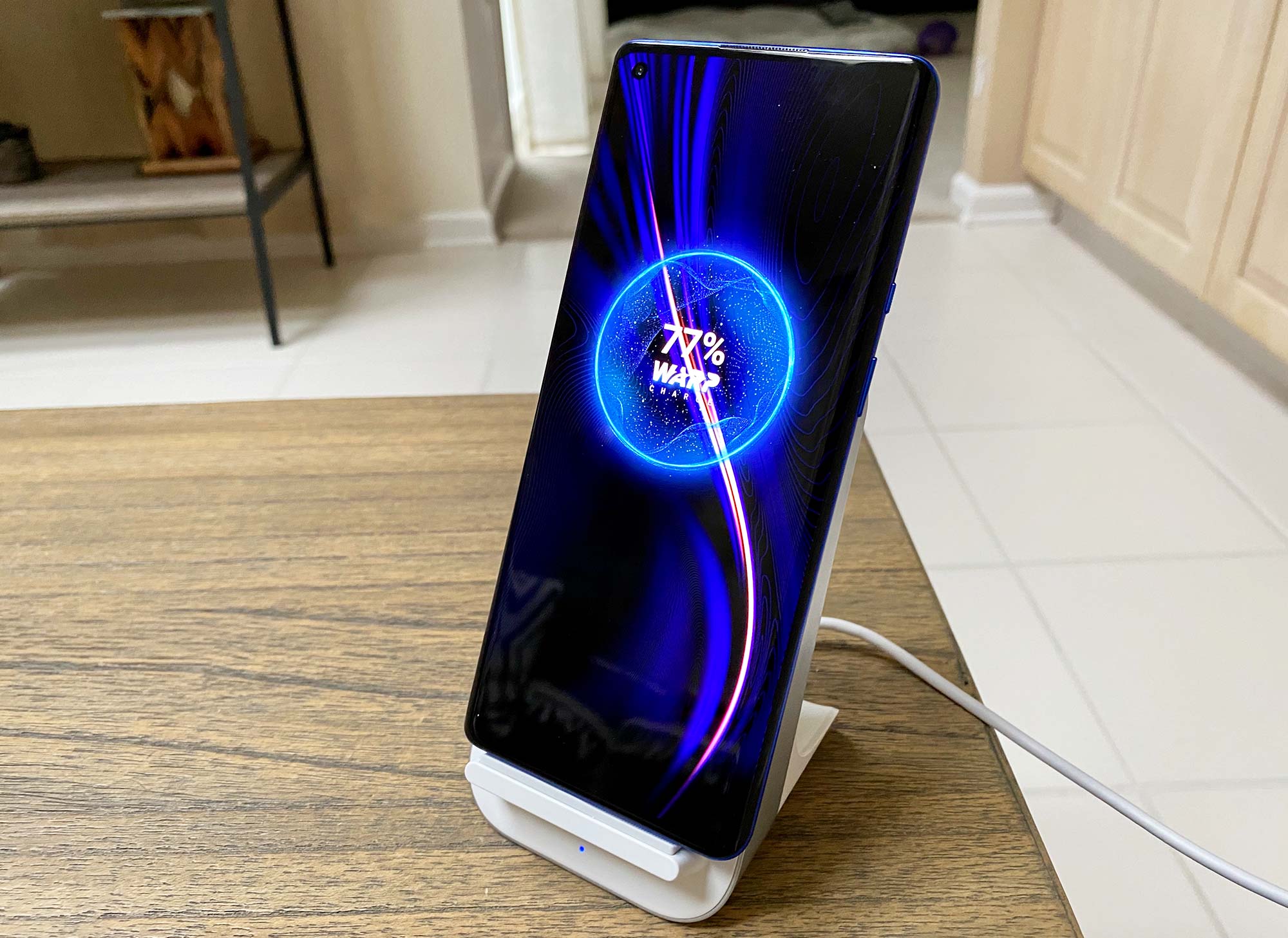
Thanks to a special Warp Charge 30 Wireless charger, available for $65, you can juice the OnePlus 8 Pro faster than any standard Qi wireless charger for iPhones or Android phones. For example, Samsung’s fast wireless charger for the Galaxy S20 charges at 15 watts; the Warp Charge 30 wireless doubles that power.
In our testing, the OnePlus 8 Pro charged to 55 percent in just 30 minutes, which is how long the iPhone 11 Pro takes to fast charge with its fast wired charger. In order to prevent overheating, the Warp Charge 30 wireless has its own built-in fan; you can hear it, but it’s not distractingly loud. The only bummer is that the wireless charger doesn’t work with the phone in landscape mode, unlike several third-party chargers.
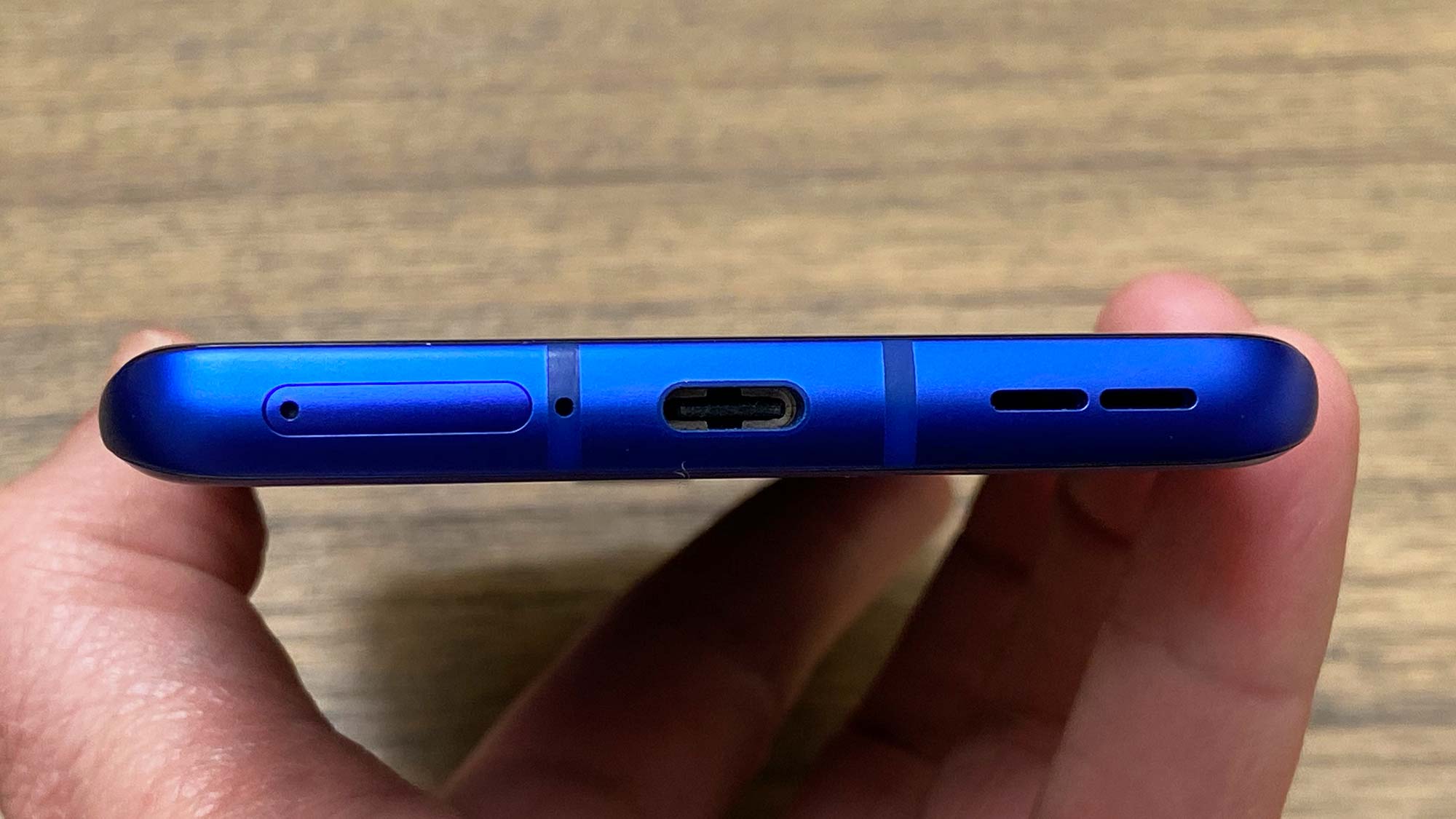
The included wired charger is even faster, as it took the OnePlus 8 Pro from 0 percent to 63% in 30 minutes and to 34% power in 15 minutes.
OnePlus 8 Pro review: OxygenOS
OnePlus’ OxygenOS does not have a lot of new features to speak of, but it adds some welcome goodies on top of Android 10. This includes an improved universal dark mode that’s now compatible with more apps and fun dynamic wallpapers that subtly shift color tones based on the outdoor temperature.
OnePlus gives you two ways to unlock the OnePlus 8 Pro: an in-screen fingerprint scanner and face unlock. I found the fingerprint scanner to be pretty quick, so long as you’re deliberate with the press. But Face Unlock is even quicker on this phone, and I can see most people opting for that first. Just keep in mind that your fingerprint or PIN is more secure, because OnePlus' 2D Face Unlock isn't as sophisticated as the 3D facial recognition in the iPhone 11 and Pixel 4.
OnePlus 8 Pro vs OnePlus 8
If you’re trying to decide between the OnePlus 8 Pro and the OnePlus 8, check out our OnePlus 8 vs OnePlus 8 Pro face-off. But there’s the gist. The OnePlus 8 Pro gives you a bigger display with a faster refresh rate (6.78 inches and 120Hz vs 6.55 inches and 90 Hz), a 3x telephoto camera, wireless charging and faster RAM. Plus, only the OnePlus 8 Pro is IP68 water resistant.
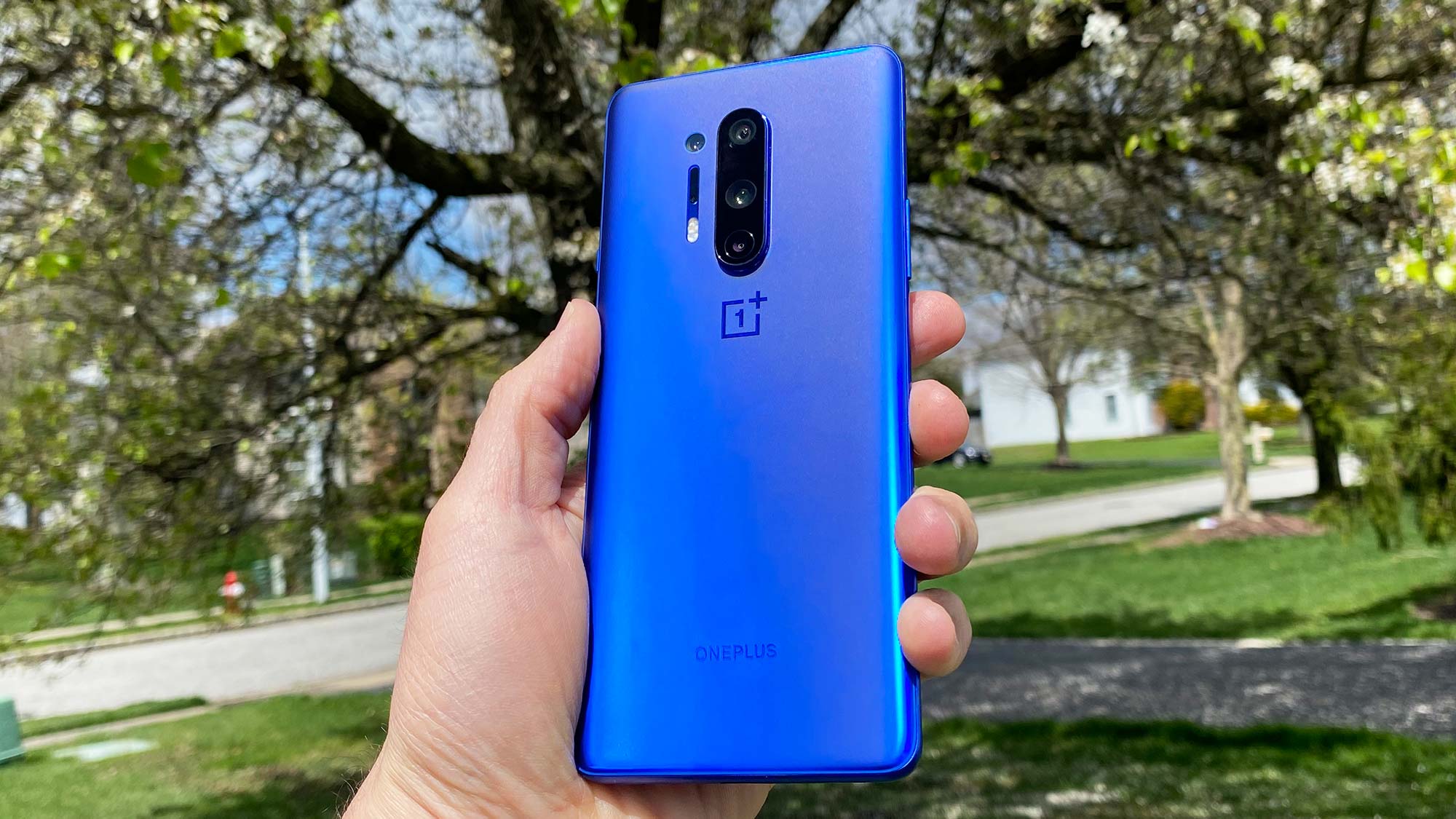
However, the regular OnePlus 8 benefits from being cheaper at $699 vs $899 for the OnePlus Pro, and only the OnePlus 8 is sold through wireless carriers in T-Mobile and Verizon. And the Verizon OnePlus 8 Pro supports mmWave 5G, which the OnePlus 8 Pro doesn’t have.
OnePlus 8 Pro review: Verdict
The OnePlus 8 Pro is now a better value thanks to the price reduction by OnePlus. And you get a lot for your money, including a 120Hz mode that doesn’t force you to choose between a fast refresh rate and the highest resolution and long battery life. Plus, the OnePlus 8 Pro offers the fastest wireless charging around.
The OnePlus 8 Pro’s cameras are not the best in its class, and I wish OnePlus went with a flat display instead of a curved one, but overall the OnePlus 8 Pro is still one of the better Android phones you can buy. I would just keep an eye out for the upcoming OnePlus 9 and OnePlus 9 Pro if you want the fastest speeds and even better cameras.
Mark Spoonauer is the global editor in chief of Tom's Guide and has covered technology for over 20 years. In addition to overseeing the direction of Tom's Guide, Mark specializes in covering all things mobile, having reviewed dozens of smartphones and other gadgets. He has spoken at key industry events and appears regularly on TV to discuss the latest trends, including Cheddar, Fox Business and other outlets. Mark was previously editor in chief of Laptop Mag, and his work has appeared in Wired, Popular Science and Inc. Follow him on Twitter at @mspoonauer.
-
Flaxos Please, how can I display fullres images from each phone. It's useless in this resolution...Reply
